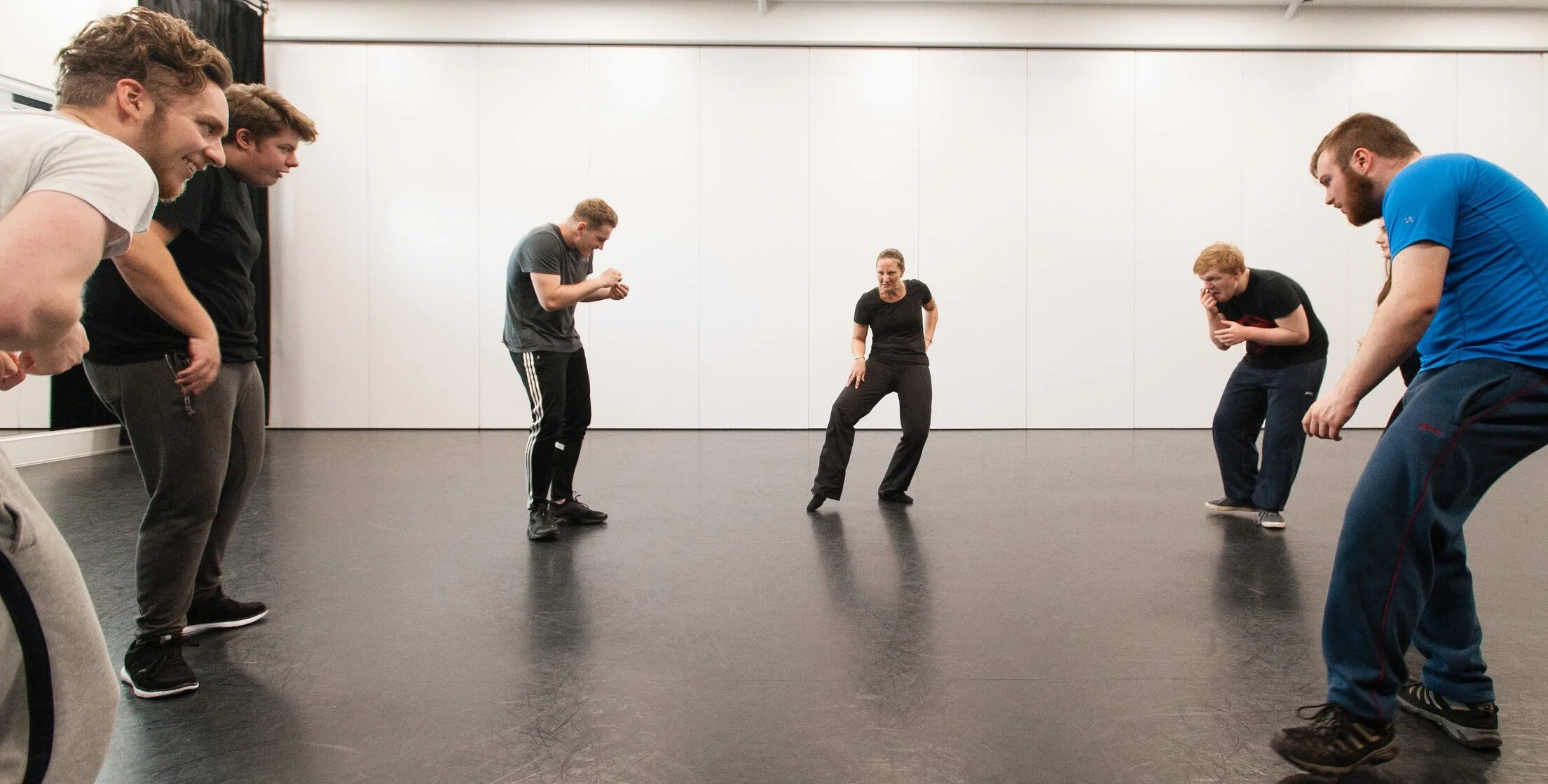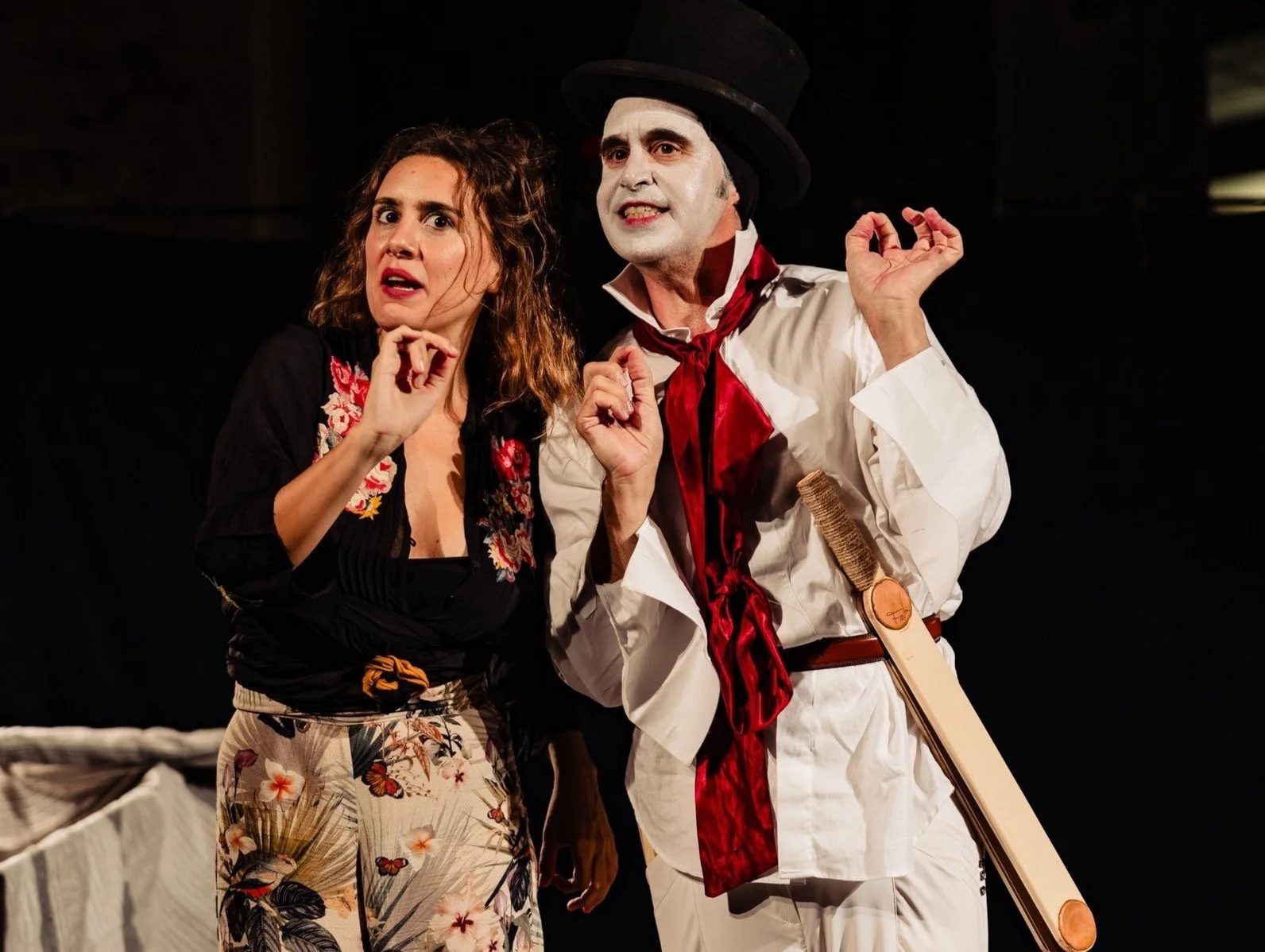From Laughter to Life Skills
Commedia in the Drama Classroom
I never cease to be amazed by the power of the mask as an enabler. I firmly believe that masks are amongst the most effective tools for unlocking creativity and confidence. Time and time again, I see a shy, quiet student dare to don a mask and, before our eyes, transform into a bold, brash captain. Of course, there may be students who feel afraid or intimidated by the masks, and this is where commedia dell’arte comes into its own. Not all characters wear masks and just as much can be learnt from playing without a mask as from playing with one - and from watching others performing in them.
Commedia dell’arte may date back to the 16th century but the humour, physicality, and larger-than-life characters are timelessly enjoyable and engaging. Commedia has faced some criticism in recent years as ‘outdated’ and ‘offensive’, but siding with this narrow view can mean students miss out on this rich learning medium that not is not only great fun, but also transformative. Commedia builds a foundation of fundamental acting skills transferable to any genre, whilst also encouraging personal and collaborative growth.
Discovering the Power of the Body
Students often struggle with self-consciousness, especially when it comes to physical expression. Commedia dell’Arte is a fantastic way to break through these barriers. Its exaggerated characters - like the prankster Arlecchino or the boastful Capitano - require bold movements, specific gestures, and distinctive postures, pushing students to go outside their comfort zone. Creating a supportive, playful environment where experimentation is celebrated is vital; I always join in with improvisation games and creating over-the-top characters, modelling the scale of exaggeration required and making silliness feel safe and enjoyable. Letting go of inhibitions is key to unlocking student creativity and confidence.
Though the physical mask may cover only part of the face, when a performer commits to the masking process, the mask covers them from head to toe in a new persona. By embodying the characters, students learn to communicate emotions, relationships, and stories using their bodies. Theatre educator and founder of Dell’Arte International, Carlo Mazzone-Clementi explained:
“Characterisation must begin at home: in the body. Some of us are not at home in our bodies. We must discover what that means. Therefore, the main emphasis of my work is physical discovery.”
Accessing Characterisation Through Archetypes
The characters of Commedia dell’Arte are instantly relatable because they represent universal archetypes like the trickster, the fool, the hopeless romantic. For school students, these archetypes are an excellent way to introduce the basics of character work. This knowledge then cross-pollinates into other studies – from Sophocles to Shakespeare.
In a classroom exercise, assigning students archetypes often reveals their hidden creativity: a well-behaved, unobtrusive student tasked with playing the trickster, Arlecchino, may surprise the class by launching into mischievous leaps with cantankerous giggles. Being enabled to step out of their comfort zones, students discover not only new characters but also new facets of their personalities.
Jacques Lecoq emphasised the power of commedia to expose the extremes of humanity:
“Commedia is based on man’s passions when pushed to their extremes. It highlights the absurdity of our behaviour. It… expresses the urgency of life, closer to survival than to the relative luxury of ordinary life.”
Listening to Unlock Playfulness and Creativity
One of the most exciting aspects of Commedia dell’Arte is its immediacy and insistence for you to leave your own reality and be truly present in the moment. Students are encouraged to think on their feet, respond to their scene partners, and engage with their audience who will bring unexpected responses and may demand unplanned interactions. Students are at their best when they trust and listen to each other.
I recall one class where students worked in threes to improvise a scene where two zanni try to steal a bag of money from Pantalone while he sleeps. After several groups raced through with numerous moves, stealing the bag with ease, we eventually saw a group who did very little, but they listened intently. As they listened to each other they found perfect coordination; as they listened to the subtle noises made by Pantalone, they found comical reactions; as they listened to the audience, they repeated moves that made the viewers laugh; the outcome was a hilarious scene that felt authentic and genuinely unfolding for the first time.
Improvisation master Keith Johnstone in his seminal book noted:
“When you act or speak spontaneously, you reveal your real self, as opposed to the self you’ve been trained to present.”
Through Commedia, students learn to embrace spontaneity and turn “mistakes” into creative opportunities, ultimately building self-assurance.
Complicitè: Teamwork and Collaboration
Commedia dell’Arte is truly the actors’ theatre where the actor is the creator and the ensemble have to draw words, comic turns, scenes from the devising process using only a canovaccio (loose scenario outline) as a starting point. Students must rely on each other to create dynamic, interactive scenes that capture the energy of Commedia.
When devising group lazzi (physical comic gags) there is often slapstick action involved that needs to be carefully rehearsed with a high level of trust so that it can still have an edge of spontaneity to it. Being open, adaptable and engaged are essential skills as students learn to coordinate their movements, timing, and reactions to make the comedy land.
“Theatre is a collective art; be open and in tune to your fellow actors.”
Connecting with the Past to Understand the Present, and Be Open to Future Possibilities
Teaching Commedia dell’Arte today isn’t about teaching history - it’s about teaching connections. By linking this rich art form to Shakespeare and modern storytelling, we help students see the continuity of human creativity and humour. They learn that the principles of comedy, improvisation, and archetypes are timeless tools for understanding ourselves and our world.
“Shakespeare, Ben Jonson, Molière, Marivaux, Beaumarchais, Goldoni … Wherever there are witty servants and domineering masters, young wives and old husbands, pompous pedants, thwarted lovers or bragging soldiers, the Commedia is there in spirit and also very often form.”
By teaching Commedia, educators prepare students as rounded and grounded performers who appreciate where theatre can take them.
Tips & Ideas
Carefully intro masks: Introduce masks gradually, perhaps by letting students observe and handle them before wearing them. Encourage students to think of the mask as a partner in storytelling, rather than a barrier, and emphasise that masks liberate them from self-consciousness by shifting focus to physicality and movement.
Warm-up games: Playful, childish games free the students to laugh and be silly. Grandma’s footsteps (translated into Pantalone’s footsteps) is a great one to use as it builds ensemble work, physical expression and control. Break the group in half so there is an audience. Place ‘Pantalone’ on one side of the stage, the performers on the other and stipulate they have to secretly pull a face, do a silly dance or be rude to the audience without getting spotted by Pantalone.
Create short lazzi (physical comic gags): Give a simple stimuli for solo lazzi, such as “Arlecchino is so hungry he catches and eats a fly” or “Two zany try to split a coin.” Encourage students to be as big and expressive as possible, including sounds, language, action and stillness.
Celebrate mistakes: Remind students that failing big is part of the process!
“Try; make mistakes; fail big and fail happily. If the audience sees you unbothered by your mistakes, then they can enjoy them too, but if they see you feel humiliated and ashamed, they will be uncomfortable.”







